7010 AN IMPORTANT PAIR OF ROCOCO GILTWOOD GIRANDOLES OF MASSIVE SCALE Genoa. Mid Eighteenth Century. Measurements: Height: 75 1/2″ (192 cm) Width: 41 3/4″ (106 cm) Depth: 16″ (40.5 cm)
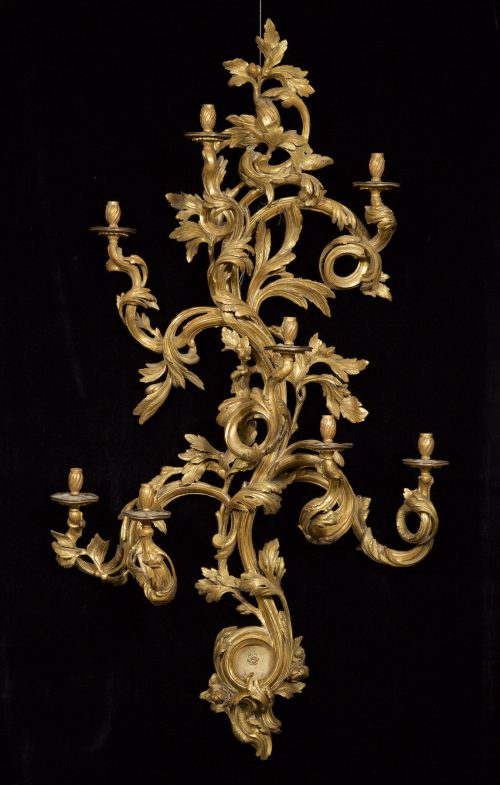
Research
Of giltwood. Each conceived as a scrolling, intertwined stem decorated with foliate carving, leaves, flowerheads and issuing eight scrolling arms terminating in spreading restored fan molding supporting replaced molded circular brass drip pan and cabled nozzles. Old restorations commensurate with the medium and age.
Provenance:
By repute, a palace in Prague
Headquarters of the Society of the Cincinnati, Washington D.C.
These carved and gilded girandoles are the largest and most complex known 18th century examples to have been executed in giltwood. The name girandole comes from the Italian girandola, a type of firework, and was applied especially to large carved and giltwood sconces in the rococo style.1
Although in the early 19th century Viennese craftsmen were famed for rendering in wood objects that would be more usual in gilt-bronze, such as clocks, chandeliers and mounts, it was the Genoese who were probably first to use giltwood to replicate the effect of gilded metal. From the 17th century, Genoa was a center of excellence for the carver’s art.
Filipo Parodi (1630-1702), the most celebrated sculpted-furniture maker to have worked in Genoa, was particularly renowned for the sense of movement with which he imbued his works. Although overtly rococo in design, it is from Parodi’s tradition that the present girandoles are derived. The dynamic fluidity of their design is still endowed with a baroque weightiness and massivity. A pair of much smaller mid-18th Genoese sculpted giltwood rococo sconces, depicted in figure 1, are more in line with the lighter French interpretations.
The present girandoles, with their dramatic proportions and masterly execution, would most probably have served their purpose in a grand reception hall. Aside from the imposing design and scale, they are in remarkable condition, retaining much of their original gilded decoration.
Footnotes:
1. Fleming, John and Hugh Honour. The Penguin Dictionary of Decorative Arts. London: Penguin Books Ltd., 1977. 327.

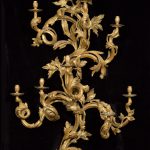
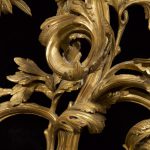
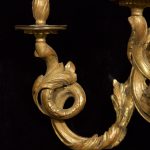
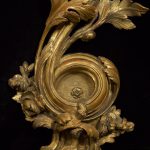
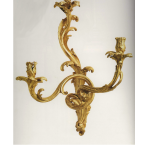
Comments are closed.